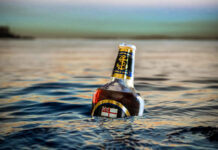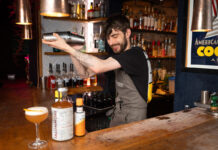
FOR folk in the wine business April is synonymous with the Bordeaux En Primeur campaign. In the event some of you are not sure what it’s all about, here’s my bluffer’s guide.
The first week of April sees the wine buying and writing worlds descend on the châteaux of Bordeaux and taste their way through samples from the 2012 vintage. It comes just after the harvest (en primeur is French for “in youth”) when the wines have been made but not yet bottled. Buying this wine effectively amounts to ‘futures’ trading, as they would say in stock broking circles.
After tasting a barrel sample, those who think a wine is worth its salt will pay the asking price at that point and, strange as it may seem, will not see a drop of the liquid until 12 to 18 months later, when it becomes available to the market.
At this point, when the wines are ‘officially’ released in bottle, what the purchaser hopes is that the up front price they paid is lower than the price at release date – allowing them to sell it for profit or wait for a future date when the price has hopefully increased further.
In the past, vintages which have been sold at tens of pounds a bottle have realised hundreds and, on rare occasions, thousands.
This is not a way to make a quick buck, though, as the big returns have only come to those who have had the patience to wait.
A recent, exceptional example was the 1990 Chateau Cheval Blanc – its case price was £400 en primeur but was ultimately sold for £6000 at auction last year.
A 1400% return on your investment is obviously mightily attractive, but is a 16 year wait to realise this something that you can manage?
The barriers to making your fortune here are supply and cost.
Only the very top tiers of Bordeaux chateaux are allowed to participate here so, relatively speaking, only a tiny amount of wine is available.
And since these producers saw an opportunity to make a mint out of the excellent 2005 vintage, the cost to buy is now very much out the reach of most.
But there’s no doubting the investment potential.
According to one wine broker, a portfolio has shown returns of 166% in the last five years whilst the FTSE-100 has increased in value by 2.9%, so if you’ve got a few grand burning a hole in your pocket, why not give it a punt!
THE CORK DORK FACT:
Check out the excellent “Pair It!” wine & food matching app if you have a smart phone.



















